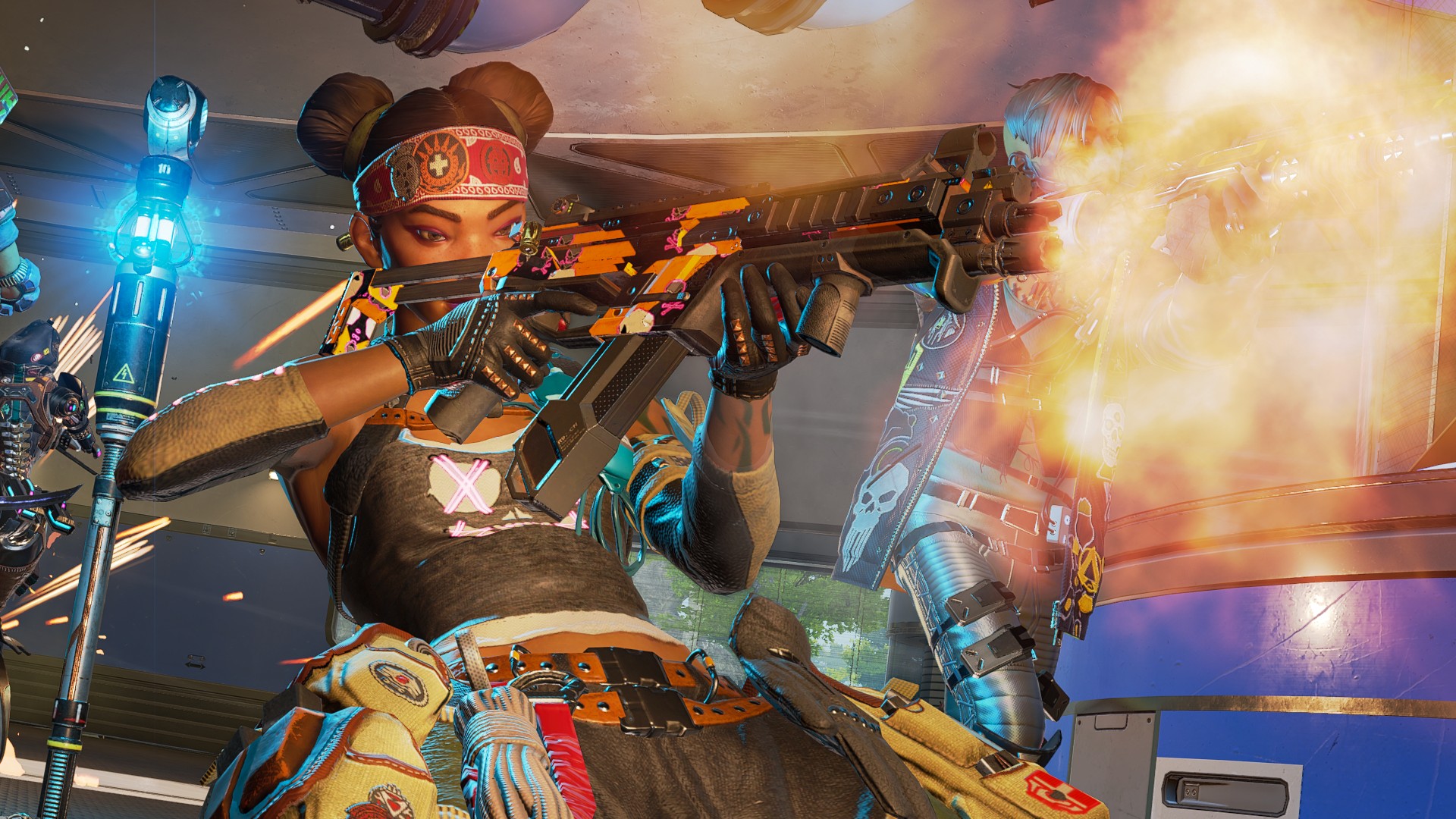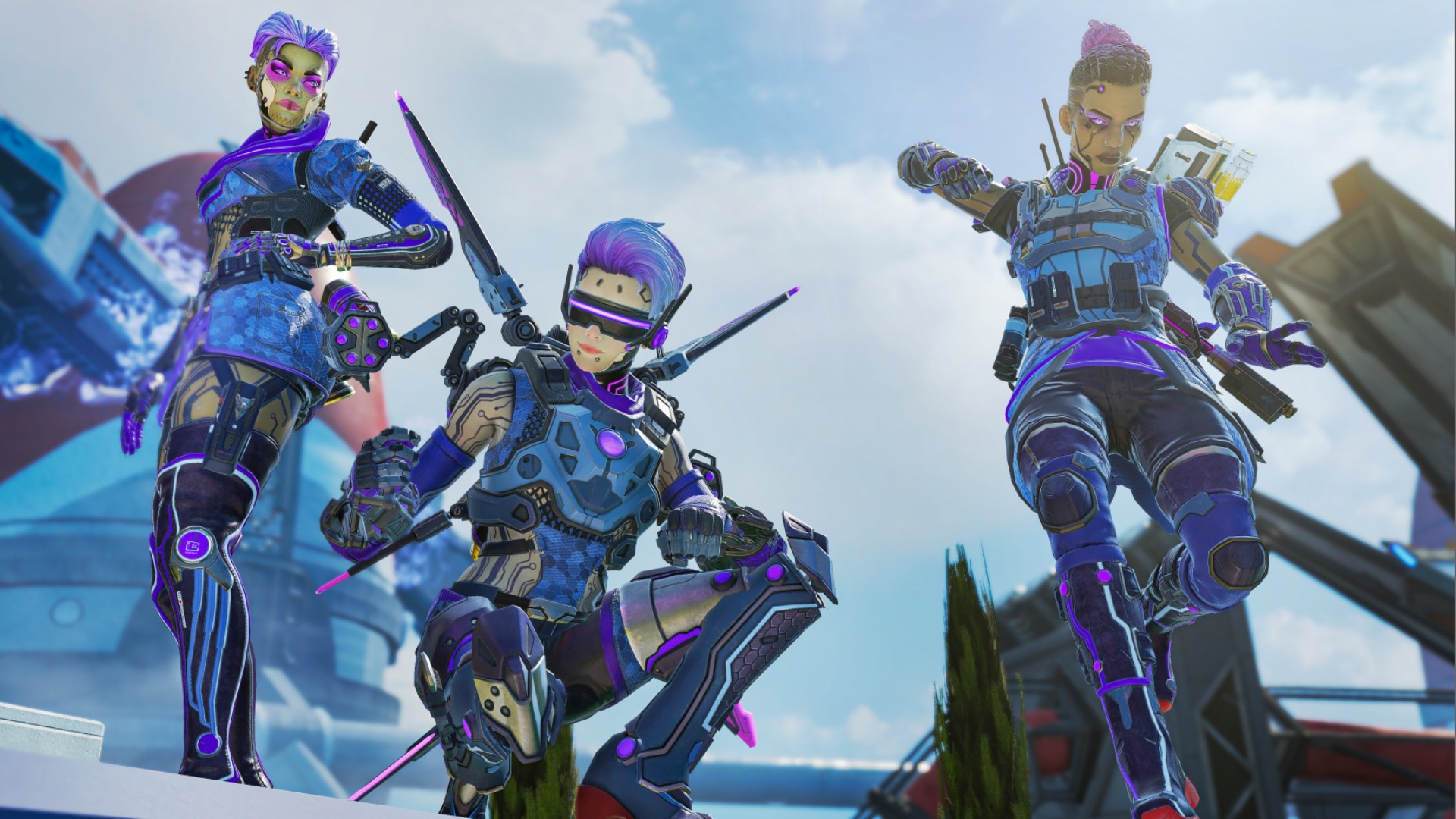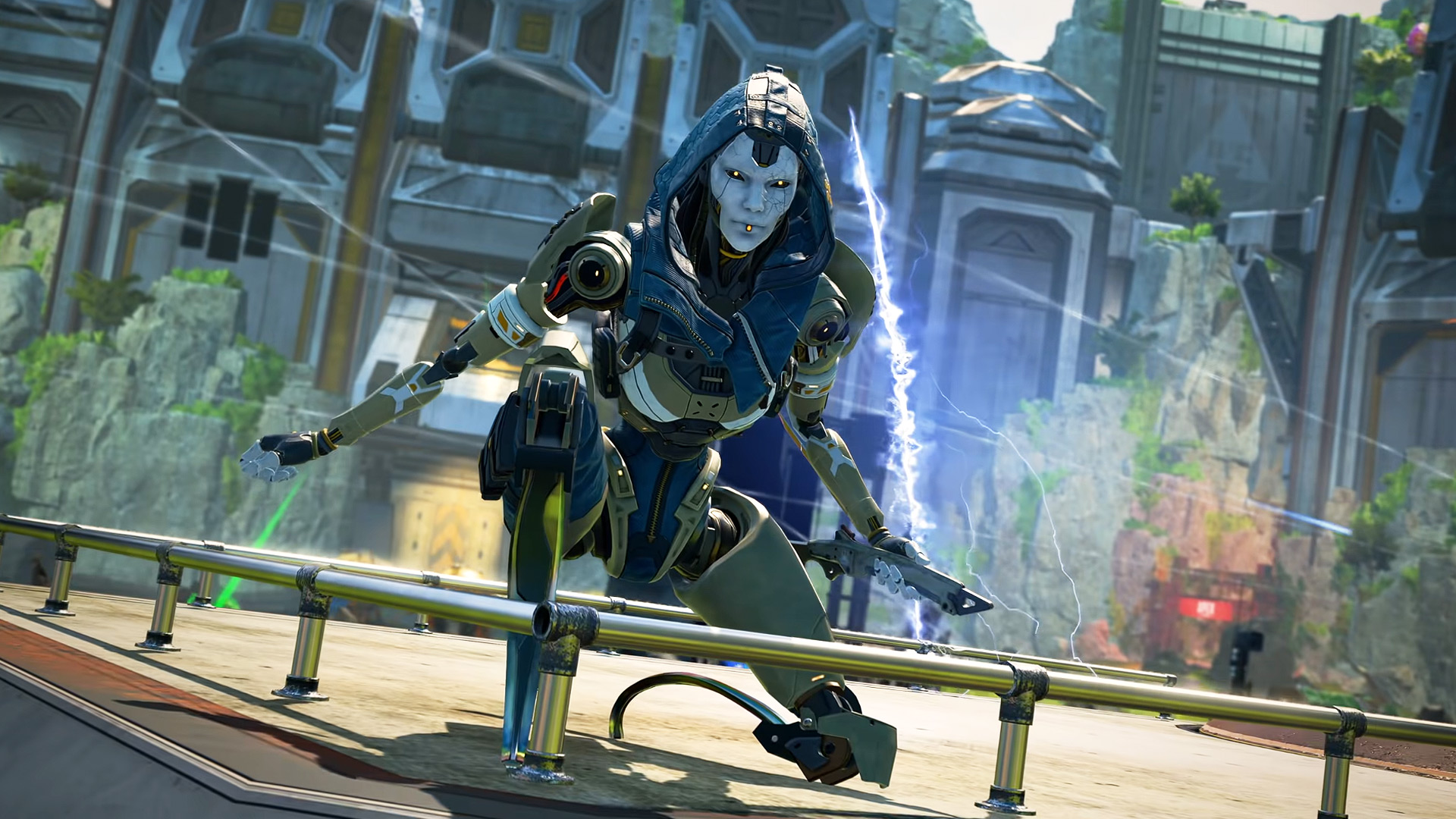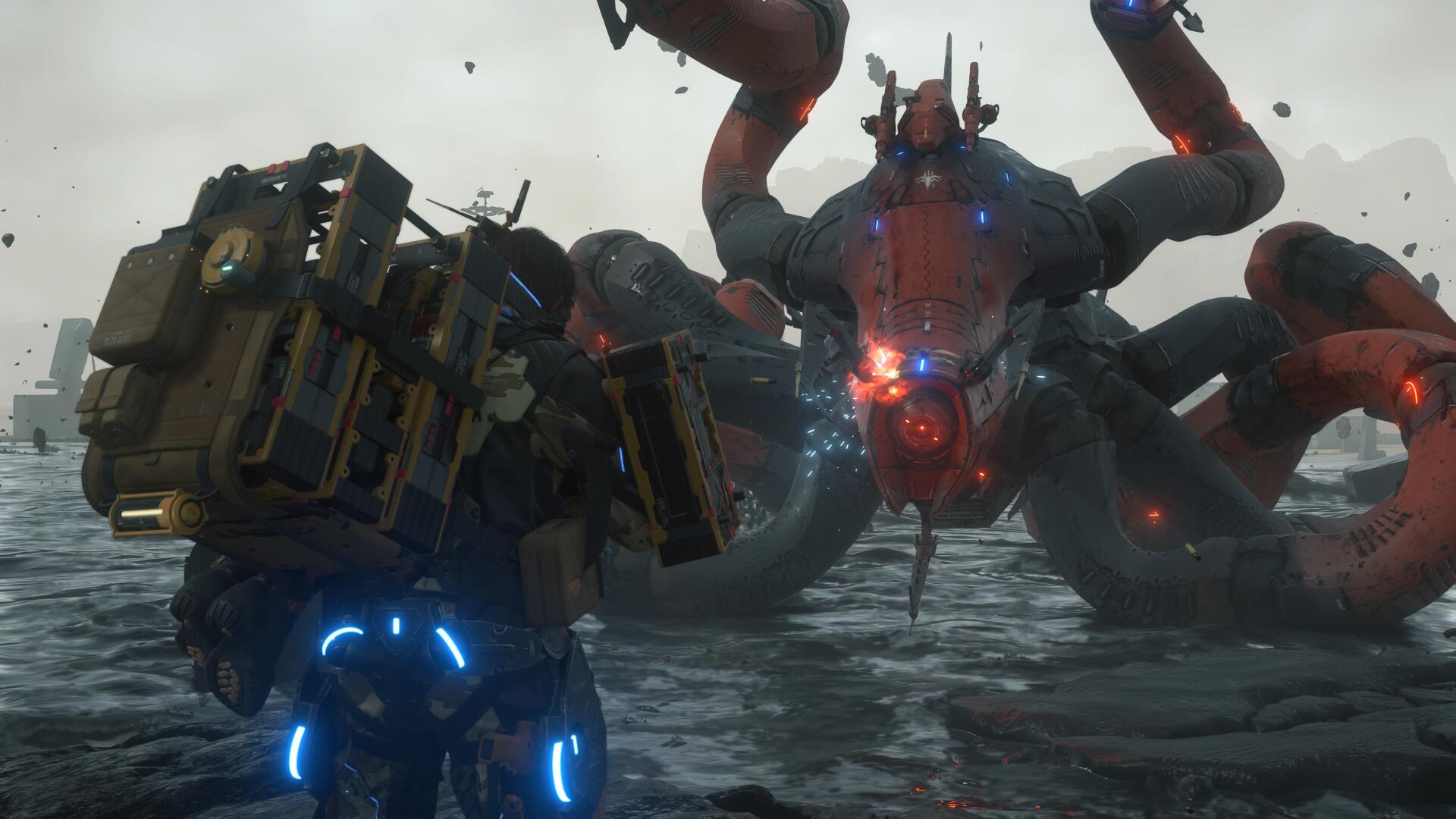Three years in, Apex Legends has replaced Battlefield as EA's flagship FPS
Respawn reflects on Apex Legends' third anniversary and looks towards the release of Season 12 Defiance

As far as live service games go, Apex Legends is the gold standard. Since its surprise launch in February 2019, it's consistently provided fun and fresh gameplay alongside regular updates, making it not just a top-tier battle royale, but one of the best multiplayer games out right now. Sure, there have been hiccups, like a Bangalore skin crashing the game, or the bizarre audio thump that keeps happening in the current season, but when you hold Apex Legends up next to other big live-service titles like Call of Duty: Warzone and Halo Infinite, it shines especially bright. And when you consider the brilliant addition of arena shooter game modes like Arenas and the upcoming Control limited-time mode, it's clear that the team behind Apex Legends is eager to expand the reach of its first-person shooter.
Perhaps initially Apex Legends was considered a second-tier FPS under EA's umbrella when compared to blockbusters like the Battlefield series and Star Wars: Battlefront. But as it has been shaped by the deft hands at Respawn, it's come to supplant the two as the publisher's flagship shooter. It isn't just a cracking good battle royale, it's EA's best FPS right now.
Concept and cadence

Apex Legends' hero-shooter-meets-battle-royale concept piqued the interest of Overwatch and Fortnite players alike – and its brilliant in-game features (like a still-unmatched ping system) made it an instant hit. "The amazing response coming out the gates caught everyone off guard," says game director Steven Ferreira. "There was a lot of having to react fast and get our feet under us in the early days, for sure." For Respawn, the experience of creating a game that didn't "exist already" meant "everything was an experiment" in the early days. "We were trying to react to a lot of moving targets," Ferreira explains.
But Apex Legends' key ingredients were clear: characters that bring unique abilities to the battlefield, gunplay and movement streamlined from Titanfall, and a loot-based weapon system that relies on expertly balanced firearms. Since February 2019, Respawn has tirelessly fine-tuned this formula, balancing and rebalancing Legends, swapping weapons and add-ons in and out of the loot pool, and debuting (and further tweaking) new maps that take advantage of its movement systems. Like a Michelin-starred chef famous for their gnocchi recipe but determined to find a better substitute for Himalayan pink salt, Respawn has consistently improved upon Apex Legends' recipe.
Improvements are only half the battle when it comes to a successful live-service game – how consistently those improvements are implemented is the other half. Cadence is a perpetual problem in titles like Halo Infinite, which is currently in month three of an inexplicably long first season, or Warzone, which dropped a new map after nearly two years just for it to be riddled with issues. Luckily for Apex Legends players, Respawn has maintained impressive consistency when it comes to updates, although that cadence took Respawn "a couple of seasons" to figure out, Ferreira admits. "We were learning and adapting, and honestly we still are today."
Apex adaptation

During a panel outlining Apex Legends: Season 12 Defiance, Ferreira spends nearly an entire minute listing all the things Respawn tweaked and adjusted during the first few seasons of Apex Legends. Big map changes that came as a result of research showcasing pain points, time-to-kill (TTK) that was adjusted based on player feedback, inventory management that disallowed you from carrying 10 thermite grenades, and more. "There was a lot of learning at the same time as all the players were learning, and so it was a bit chaotic but it was a ton of fun," Ferreira says.
Despite the chaos, Apex Legends now has one of the most consistent and quality content cadences in the battle royale game. New seasons drop every three months, bringing with them a new Legend and a new weapon, whether it's entirely new to the game like the CAR SMG or a previously vaulted (AKA available only in care package drops) weapon like the G7 Scout. In its three years of existence, Apex Legends has given us four maps, each of which have gotten makeovers of varying severity to keep them fresh or temporary town takeovers centered around a specific Legend. Each season also includes a themed event with a unique set of cosmetics.
Weekly digests, tales from the communities you love, and more
There was a lot of learning at the same time as all the players were learning, and so it was a bit chaotic but it was a ton of fun
Game director Steven Ferreira
While Respawn may have had to find its footing as a live-service game developer, following its work on two Titanfall games, the team's dedication to implementing lessons learned during its growing period is impressive. With lead times for Legends and new BR maps well over a year, the first few Apex Legends maps were adjusted as the team learned valuable lessons about pacing, map layouts, and more. The most recent map, Storm Point, "was the first new map where we started to take some of those learnings from the first season and make changes to the core design of the map," Ferreira explains.
And Olympus, the map that came out in late 2020, will soon receive a major overhaul, based entirely on three years' worth of lessons. It's the first map Respawn has adjusted without changing the makeup of its points-of-interest (POI) all that much, but by spacing them out more to help promote a better map flow. "Flexibility is an integral part of our development process," says Ferreira. And it's that flexibility that helps keep Apex feeling fresh. Coming up this season? "We've got things we've never tried before," Ferreira promises.
Going for FPS gold

Respawn made moves to establish Apex Legends as more than a battle royale back in May 2021 with Arenas, a permanent 3v3 mode. Arenas is nothing like the core battle royale offering: matches take place on much smaller maps, players choose their loadouts in the pre-round screen, and you win by pulling ahead by two rounds. It's a fast-paced and frenetic mode that showcases Apex's quality in movement and weapons. It's also a great way for new players to get their toes wet, or returning players to get the hang of the mechanics again.
But Respawn is bringing even more variety to the table with Control, a three-week LTM that starts as soon as Season 12 Defiance kicks off. The 9v9 mode matches you in a squad of three before joining you with two other three-stacks. Control tasks you with capturing three zones across maps that are quite a bit larger than in Arenas, pulled from sections of the battle royale maps. Holding zones generates a score, and the first team to reach the score threshold wins. Control has quite a few key differences to Arenas: there's infinite ammo, your shield regenerates, and there can be multiple Legends on the same team.
Game designer Mark Yampolsky explains the ideology behind LTMs like Control. "We knew from the get go that we wanted Control to carve out a space for casual play within Apex. We heard a lot of feedback from our players that even our non-ranked queues can feel pretty sweaty at times, so we wanted to make an experience that takes all of the things that makes Apex awesome – our movement, our gunplay, our characters, and their abilities – and put them in a context that's less stressful for players."
Control, like Arenas, won't just function as a testing ground for potential Apex converts, but will also be a practice space for seasoned vets. "It's a place where you can get a lot of reps in to try out new weapons and tactics," Ferreira says. Come February 8, Apex Legends will have not one, but two playlists offering up arena-style gameplay alongside its traditional battle royale format, making it a formidably flexible beast.
EA has had a challenging few years in the first-person shooter space. Star Wars Battlefront 2 endured a controversial launch and developer DICE spent three years battling back against the bad reputation that formed in the aftermath – it's telling that the series is now on hiatus, as Respawn begins work on a Star Wars FPS of its own. And EA's star franchise hasn't had an easy time of it either, with Battlefield 2042 struggling to retain its playerbase amidst yet another difficult launch window for the series. In this environment, Apex Legends has been able to flourish. As Respawn celebrates the shooter's third anniversary, it's stronger than it has ever been – breaking down barriers and expanding its scope of play with wild abandon. Apex Legends isn't just one of the best battle royales and arena shooters on the market, it's now EA's flagship FPS – an accolade it has more than earned.
Apex Legends Season 12 Defiance kicks off February 8 on PC, PS4, PS5, Xbox One, Xbox Series X, and Nintendo Switch.
Apex Legends tips | Apex Legends best weapons | Apex Legends best characters | Apex Legends crafting metal | Apex Legends heirlooms | Apex Legends crossplay | Apex Legends skydive emotes
Alyssa Mercante is an editor and features writer at GamesRadar based out of Brooklyn, NY. Prior to entering the industry, she got her Masters's degree in Modern and Contemporary Literature at Newcastle University with a dissertation focusing on contemporary indie games. She spends most of her time playing competitive shooters and in-depth RPGs and was recently on a PAX Panel about the best bars in video games. In her spare time Alyssa rescues cats, practices her Italian, and plays soccer.



